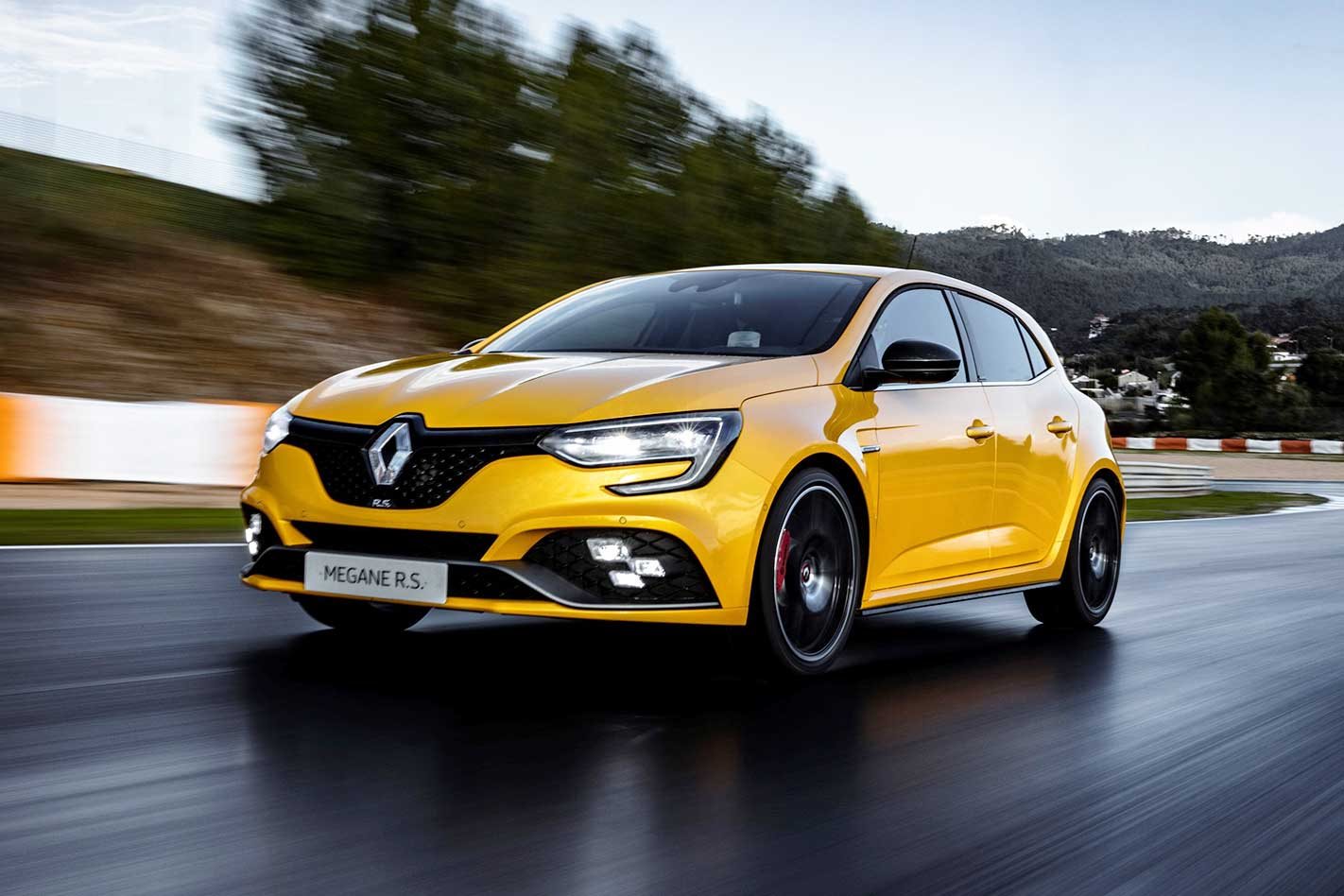MOTOR first drive review
Is this soon? It feels soon. The Renault Mégane RS only arrived last September and yet here, already, is the Trophy version – generally the go-to variant of RS models for those who like their hot hatches flaming.
New to the Renault Mégane RS Trophy is more power, and more ‘stuff’. Output from the 1.8 turbo petrol is 220kW, up 15kW over the regular RS, and if you spec the dual-clutch gearbox, torque is up from 390Nm to 420Nm. Spec the standard six-speed manual and torque is limited to 400Nm because that’s all the gearbox can handle.
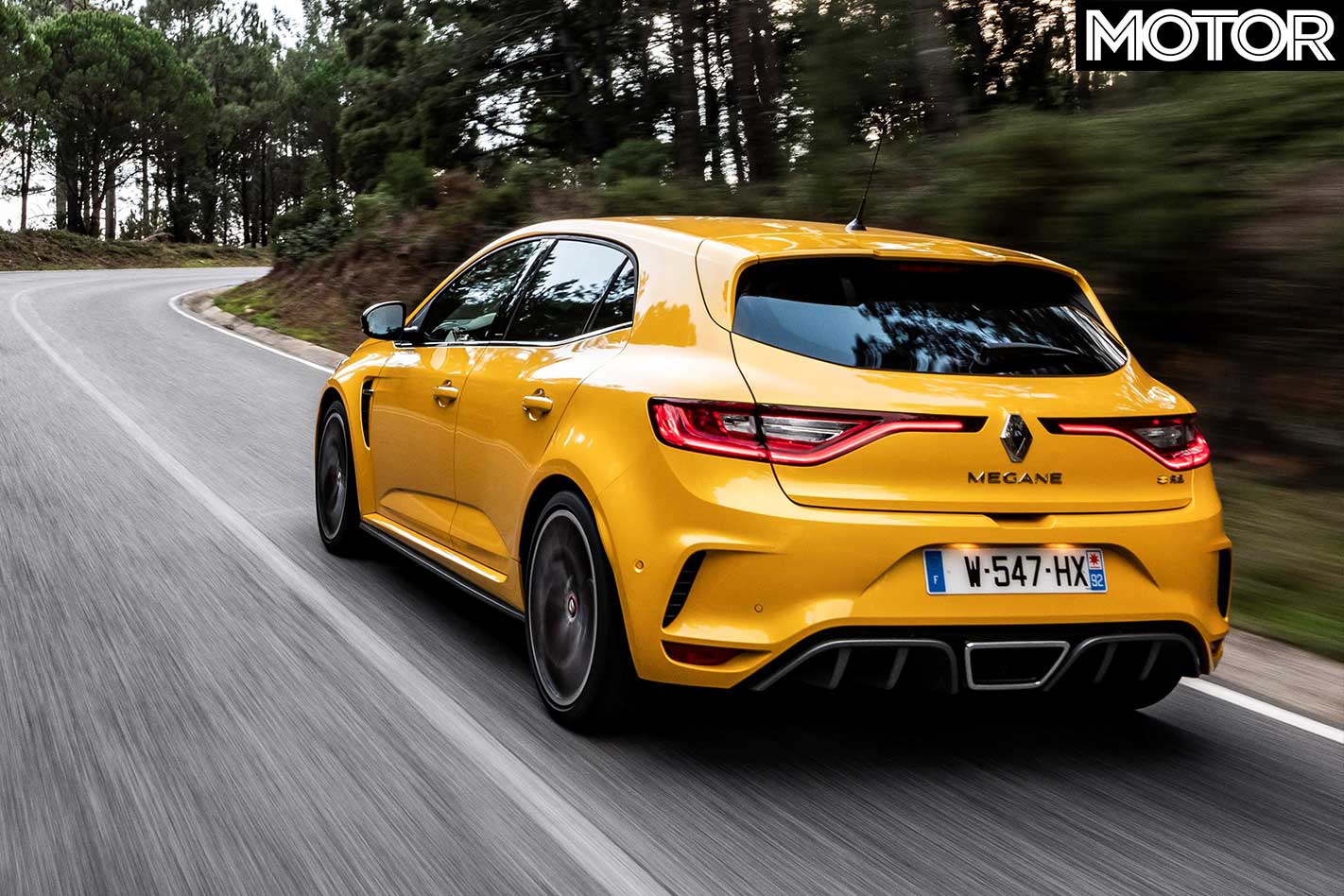
Throttle response is quicker either way, owing to the adoption of a ceramic turbo bearing, while there is a freer-breathing exhaust that has an active flap in it, which Renault says offers ‘two tones’. With it shut it’s ‘easy on the ears’ and with it open ‘the full sporty potential can be expressed’. In other words, quiet or loud.
There are 19-inch wheels whose design is inspired by the RS01 concept car (very cool too), shod with Bridgestone Potenza S001 tyres, and there will be the upcoming option of S007s, as soon as they’re homologated, which are better for dry use and on a circuit. You can spec a lighter wheel too, which mightn’t look as good but saves 2kg a corner. All of this stuff is Trophy-specific.
You get the Cup chassis as standard, which brings a series of nice, round numbers – 25 per cent stiffer dampers, 30 per cent stiffer springs and 10 per cent stiffer anti-roll bars – as well as a Torsen limited-slip diff and bi-material front brake discs, which are 1.8kg a corner lighter than the regular RS’s.
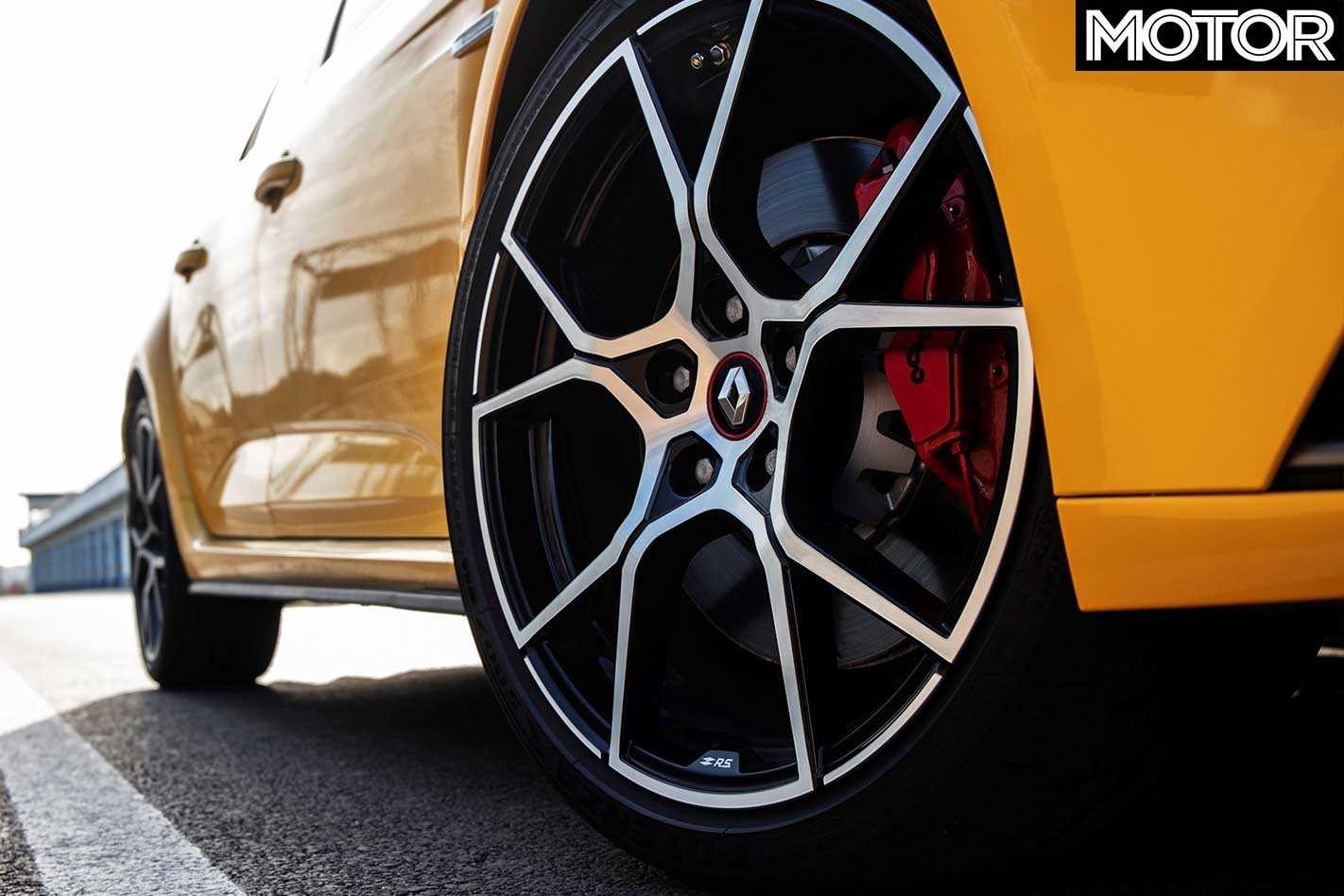
To denote it’s a Trophy there’s a bit of badging on the outside, but it’s a pretty subtle transformation. Inside, meanwhile, there’s the option of a new seat – an Alcantara-shod Recaro that sits you 20mm lower than normal.
The new seat is great, lending the Trophy a good driving position, if ultimately one less adjustable than a Volkswagen Golf GTI’s. The interior feels solid and the Mégane generally feels a large car.
It is also a quick one. Throttle response is good for a heavily blown turbo, and there’s a degree of induction noise, but most of the soundtrack comes from the exhaust’s melodramatic pops and crackles on the overrun. The Trophy we tried was a six-speed manual, whose shift is notchier than you’d hope, but positive enough.
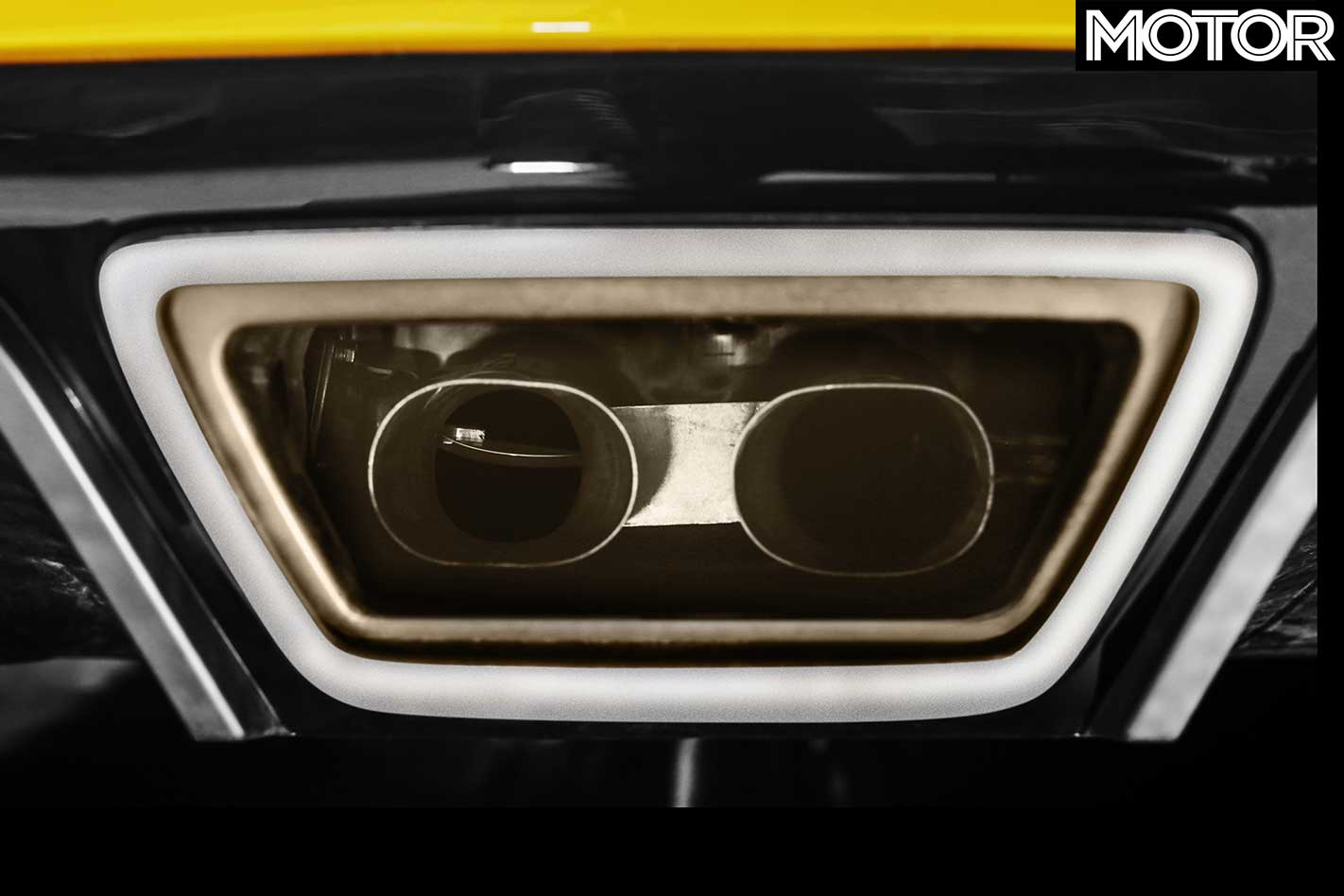
The Trophy drives the same way, to my feel, as an RS with Cup settings. The balance, then, is good, and engaging but still curious. There was a time when a Mégane would be the clear driver’s choice over a Honda or Volkswagen or Hyundai, but that time isn’t now.
The Mégane is arguably still the most agile of these, and almost certainly the most willing to engage the rear wheels in a corner, because it adopted four-wheel steer to help do it.
This electronically controlled assistance to the back wheels steers them in the opposite direction to the fronts at anything below 100km/h, and more markedly if you choose Race on the drive mode selector than if you’re in the Normal or Sport settings. Renault reckons Race might be a bit bitey, too aggressive, for the road.
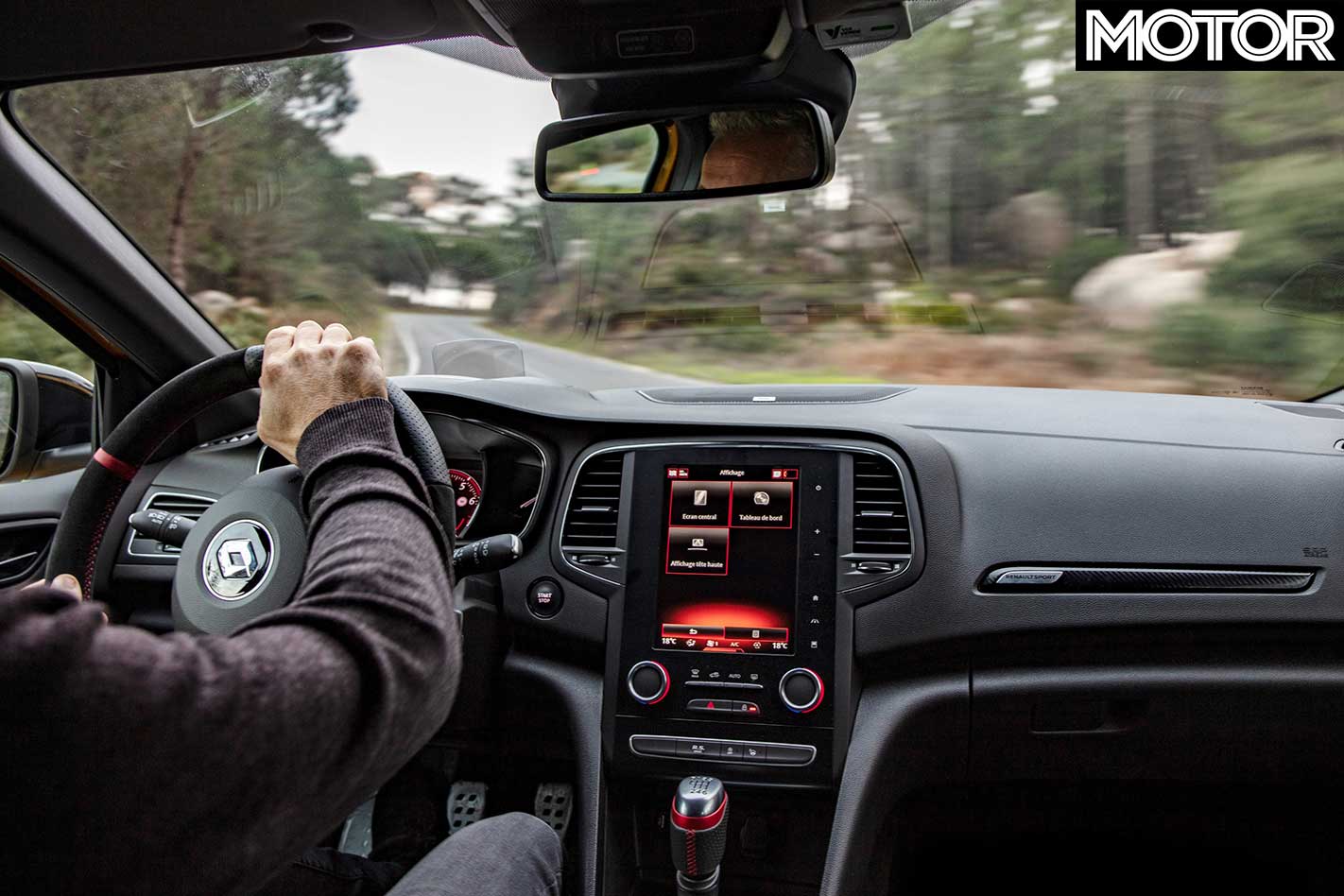
There is no doubt that it’s willing to go plenty sideways, plenty quickly, if you turn in to a corner on anything other than throttle. Lift and it will tuck in; trail the brakes and it will tuck in; just turn and it will tuck in.
The Mégane is as lairy as front-drivers currently get, and if you then get back on the power, it pulls itself straight again. There’s a degree of torque-steer – manageable but evident – and good steering feel, but the balance you experience is usually one of managing understeer or managing oversteer, rather than just playing with a hint of either.
In the old Renaultsport Mégane, especially in Trophy specification, you felt you were in charge of the most precise, scything, accurate hot hatch in the world. Now I don’t think that is true. A Golf GTI is more passive, true, but it’s very accurate, and a Hyundai i30 N has a more pleasing and, crucially, more natural chassis balance too, while a Honda Civic Type R feels more precise (if less exciting).

The Mégane feels like it is artificially helping you out, noticing you turning the wheel and deciding you want to turn loads, right now. I wonder if active rear-steer is the automotive equivalent of 3D cinema: an unnecessary addenda, put on to increase the perceived drama and enthusiasm to something that didn’t really need it in the first place.
I think the Trophy is good on the road, mind. Body control is tight, but ride comfort is relatively pliant despite the increase in stiffness over the regular chassis, because there are hydraulic bump stops to round off the worst of things.
Its cornering stance feels more natural on the road too, with the drive mode and therefore rear-steer’s aggressiveness knocked back, although it’s still towards the upper end of the agility scale. Unusually, though, on the customisable drive modes I found myself doing the opposite to usual and upping the steering weight and lowering the engine (and therefore exhaust) shoutiness.

The Trophy is a fine hot hatchback, with a character and agility that in previous years would have been rewarding enough to make it the best car in the class. But with a feel of artificiality to the way it shifts its corner balance that, most notably, a Hyundai i30 N feels entirely natural doing, the Mégane feels like it’s trying too hard to please these days.
The Trophy will come in at around $50,000, a $5000 increase over the standard car. That’s pretty good value if you work out the cost of the optional kit like 19-inch wheels, the Cup chassis and bi-material brakes, making the Trophy financially quite appealing, especially given it will be the easier version to resell later. I like it. I like driving it a lot, and some people will like it more than all the rivals. But to me it feels like a good and competitive hot hatch among many and not, as it once was, the obvious boss of them all.
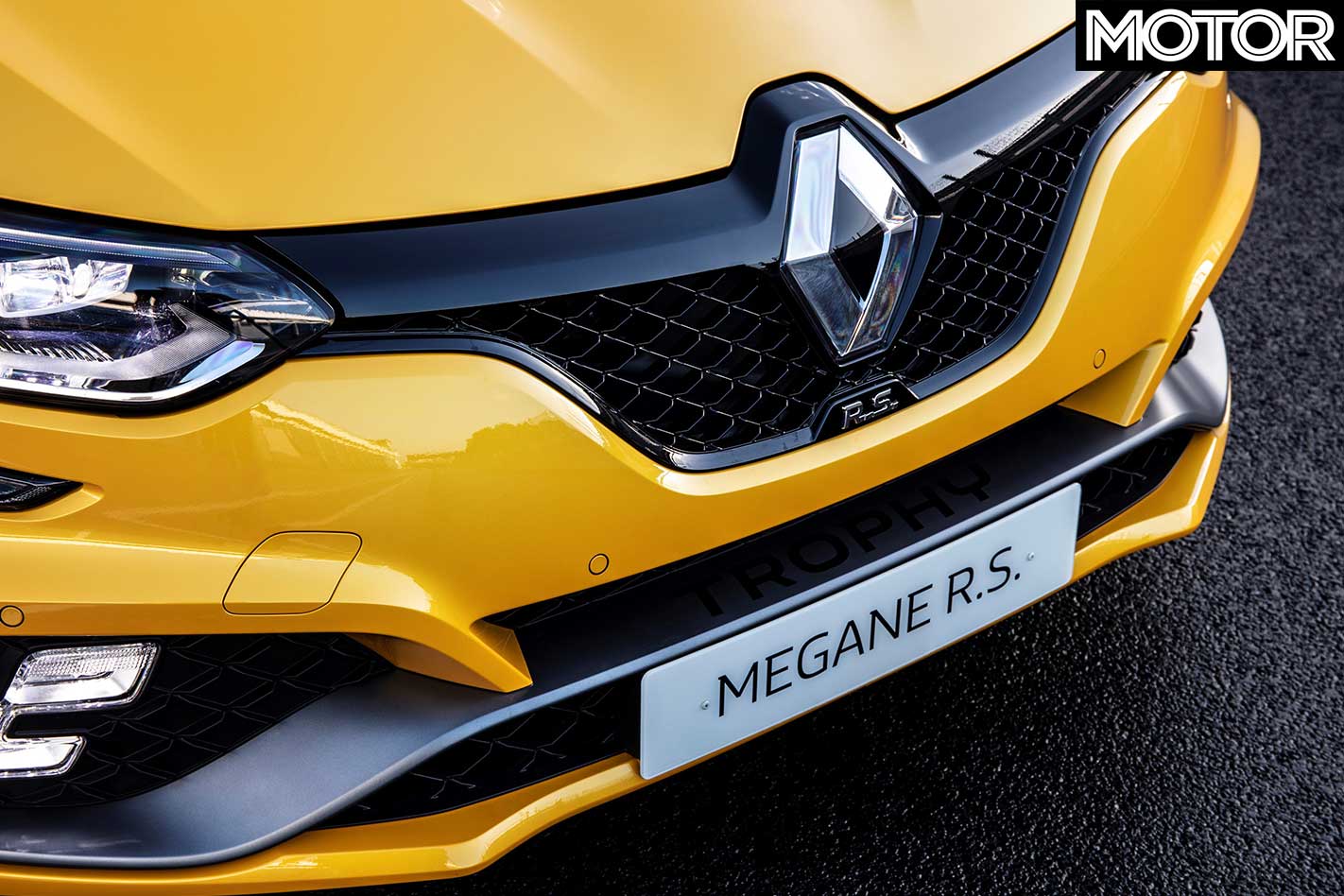
2019 RENAULT MÉGANE RS 300 TROPHY SPECS: Engine: 1798cc inline 4, turbo, DOHC, 16v Power: 220kW @ 6000rpm Torque: 420Nm @ 2400rpm Weight: 1419kg 0-100km/h: 5.7 sec (w/manual, claimed) Price: $50,000 (est)
Like: Decent jump in engine performance; throttle response; chassis balance; value equation Dislike: Lower torque with the manual gearbox; notchy gear shift; artificial-feeling handling
Rating: 4.0 out of 5 stars
The Nemesis
2019 Honda Civic Type R 2.0-litre turbo four; FWD; 228kW/400Nm; 0-100km/h: 5.7sec; 1380kg; $51,990
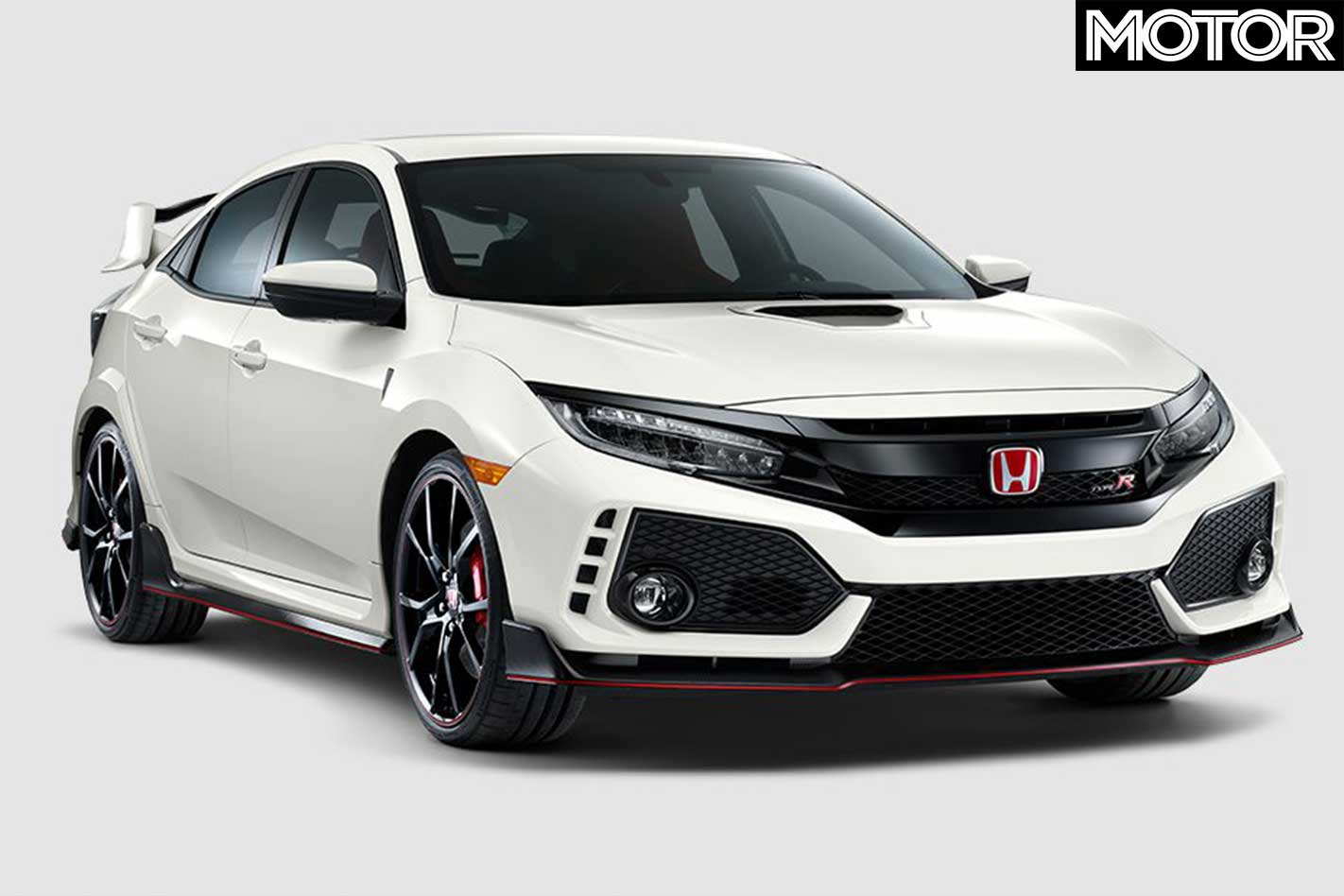
The Honda now reigns over the hot-hatch kingdom. Its title as the greatest front-drive car is no exaggeration and that, with its price, puts it in the Trophy’s crosshairs
MOTOR first Australian drive review

Not as mental as the Trophy-R, but with a DCT and still $22,000 cheaper By: Louis Cordony | Photos: Nathan Jacobs
There’s a moment in the new Renault Megane RS Trophy, after hooking a descending right-hander five klicks too fast, my mind scans back to the last-generation car and memories of its hyper-active rear-end.
Said memories suggest my mistake in this new car should see me off in the weeds. But as I slowly wind on opposite lock, something strange happens. The car’s polar movement disappears and it arrests the slide before it really gets a chance to begin.
The whole action happens smoother than any stability system could hope or any race driver could correct. And that leaves only one explanation: the 4Control system.
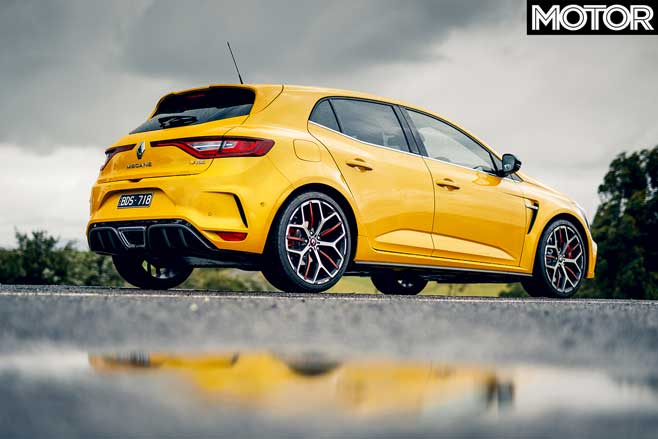
Rear steering has defined the fourth-generation Megane RS and, although it has proved divisive since debut, this Trophy looks to offer the most honed package with it yet.
For instance, its turbocharged 1.8-litre four relies on the same ceramic ball-bearing turbocharger as the limited-edition Trophy-R to produce 221kW and 400Nm, or 15kW and 10Nm more than the RS Cup and Sport versions.
And it’s here the regular Trophy can take things one step further. Tick the box for the six-speed dual-clutch transmission and the torque output lifts to 420Nm. The transmission is not hamstrung by the six-speed manual’s torque limit and is able to bear another 20Nm.
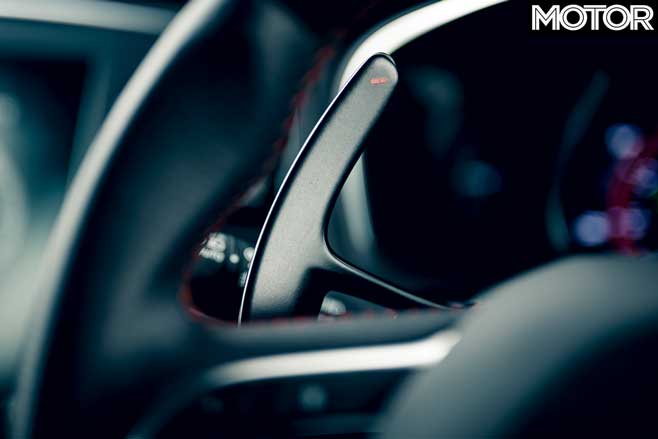
That makes the new bi-material brake discs all the more appropriate since they’re claimed to shed 1.8kg per corner, even though they look remarkably similar to the items on the Megane RS Cup, save for some new slots on their faces.
Overseas, Renault offers customers the option to upgrade the Trophy’s rolling stock further with Bridgestone S007 tyres. They’re the same as what’s on the Trophy-R and they helped Renault reclaim its Nurburgring record from Honda. They also come with lightweight wheels to match the extra grip, but unfortunately they’re not available Down Under.
There’s also a 20mm-lower seating position, which might not sound like a lot but there’s something aggressive about how you sink lower in the car – as if it gets you in the mood, especially when the seats are deeply bucketed and finished in Alcantara.
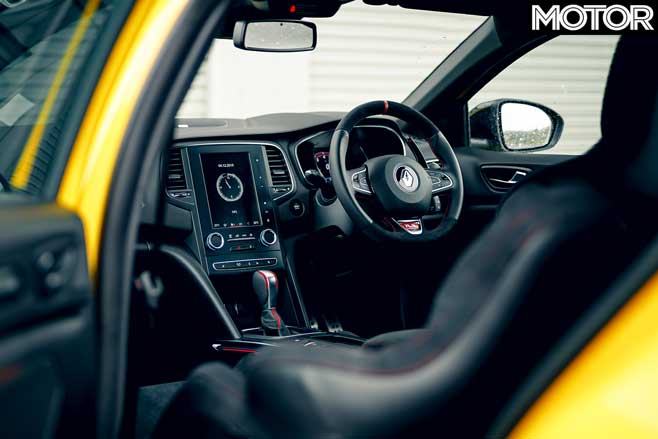
Renault Sport has also finely tweaked the exhaust for a more sophisticated growl, thanks to a mechanical valve that opens and shuts depending on what drive mode you select. When open, it sounds like it has unlocked a harder edge in the upper rev range. That could be just us, but it also could come down to the EDC powertrain’s mapping.
Find yourself on a racetrack like I did and you’ll enjoy the EDC transmission interrupting with a spark-cut on each upshift, firing out a pop behind you as it launches forward out of corners with more punch than a regular RS280. It’s super-responsive.
Launch control, as well as a Torsen LSD, effectively grounds its power from standstill. And besides some wheelspin in the top of first gear, it offers huge grip off the line and will easily reel off 5.8sec sprints to 100km/h from rest without much fuss (the claim is 5.7sec).
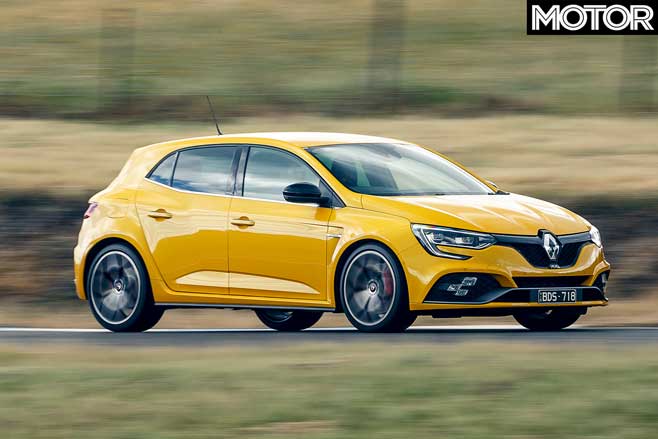
Stiffened suspension extracts the huge cornering speeds you would expect from the 235mm-wide tyres fitted to the RS, and the incredibly light steering gives the Trophy an agile feel that is now default among the RS family.
The lighter brake discs sharpen its responses and soothe the firm ride ever so slightly, and the 4Control system means the Trophy’s dynamic package remains very familiar to the RS Cup with which it shares its suspension hardware.
You never quite grasp what the rear wheels are going to do because sometimes it helps rotate the car, as you might like, but then it will interfere with linear inputs on longer bends. The Trophy-R’s static rear axle proves much more cohesive.
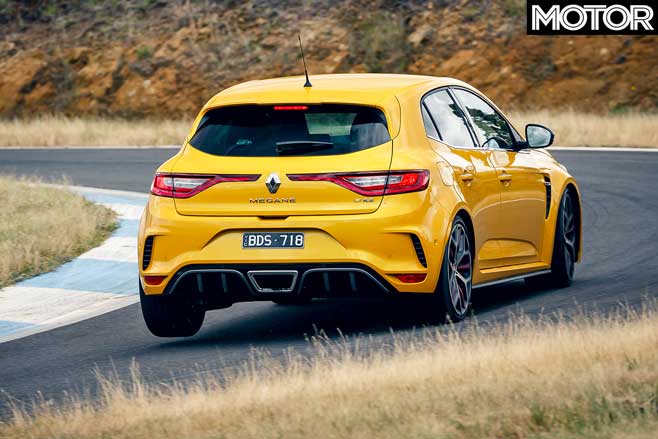
Where the Megane RS Trophy makes sense is if you had eyes on an RS Cup EDC and planned a chip upgrade, brake discs, lower seat rails and adjustable exhaust muffler. Then the extra $4K is easily justified.
But that missing special tyre and wheel pack would really help clarify the Trophy’s place in an already busy Megane RS range and solidify its link to the mental Trophy-R.
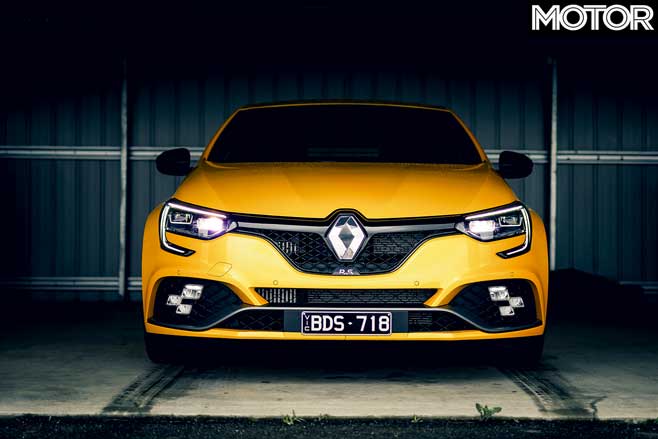
2020 RENAULT MÉGANE RS 300 TROPHY SPECS: Engine: 1798cc inline 4, turbo, DOHC, 16v Power: 221kW @ 6000rpm Torque: 420Nm @ 3200rpm Weight: 1419kg 0-100km/h: 5.8 sec (tested) Price: $55,990
Like: Excellent driving position; sharp steering; rorty and responsive powertrain Dislike: Firm ride; rear-steering; sticky tyre option not available here
Rating: 3.5 out of 5 stars

